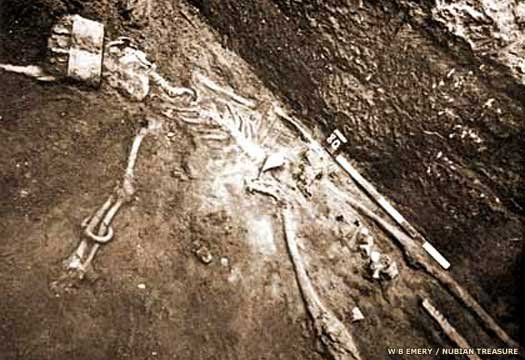Bármily meglepő a magyar királyi koronának ez az egyetlen hasonló teremtéstani jelképábrázolással bíró "testvér" koronája. A fiatal király a IV. században (Balana kultúra) élt és minden Etióp és Núbiai királya volt akkoriban. Ahogy a Nap a Holdban tükröződik, úgy ez a korona a Plejádok földi fény tükröződése. Az ezüst koronát Blanh temetőjében találták Abu Szimbeltől délre 1930-ban. A kis királyság a 4. és a 5 század között létezett, Meroe Királyságaként. Kalabsha templomában egy felirat szerint "Selco" királyt minden Núbiai és Etiópok királyaként tisztelték. Valószínűleg az első keresztény vallás királya volt Afrikában. A korona két részből áll.Található rajta lótuszvirág, Hórusz isten, sólymok hada, és egy hatalmas félhold és több kobra kígyó. A hetes meghatározó szám a koronán, melyet a piros rubin ékszerek fémjeleznek............................
Silver Diadem: This silver crown comes from the necropolis of Ballana situated south of Abu Simbel, the site is today submerged by the waters of Lake Nasser. The tomb in which the crown was found, without doubt, is that of a local potentate judging by the abundance and quality of the material uncovered in the 1930s by W.B. Emery. It falls within the category of culture called X-Group (or Ballana Culture) which developed after the breakup of the Empire of Meroë into small kingdoms or principalities. This period is between the end of the 4th century and the beginning of the 6th century AD.
The individual whose corpse was adorned with this crown was probably one of the kings of these small principalities who succeeded the domination of the kings of Meroë. It could be identified as Silko, dating back to the 5th century, who was proclaimed in a Greek inscription within the temple of Kalabsha, “King of Nobatae and all of Ethiopians”. The crown still includes a set of representations from a repertoire directly inspired from ancient Egyptian iconography; however, its symbol and its form are no longer Egyptian.
The crown is composed of two parts, a diadem and a crest. The diadem is decorated with a frieze of Horus falcons between two rows of small squares and circles. The falcons are separated by a lotus blossom; they are facing left, standing on a pedestal and crowned with a Pschent, the double crown of the pharaohs, symbol of the union between Upper and Lower Egypt. The upper edge of the diadem shows a ram’s head in the round topped by a high crest; Uraei cut from a thin sheet of silver and capped with a sun-disk are fitted around, divided up into two groups of seven on both sides of the central element of the crown. The crest consists of a crescent moon turned upwards, surmounted with a pair of horizontal horns carrying four tall feathers framed by two upraised Uraei. They are all capped with a sun-disk. These elements are inlaid with hard stones (carnelians), seven on the crescent, one inside each sun-disk for feathers and Uraei. This rather heterogeneous assemblage of “baroque” silverware finds its main inspiration from the Egyptian world, but the layout and symbolism of its elements testify to the revisions made by Kushites of Pharaonic iconography. The crescent moon is often associated with the god Apedermak, one of whose form can also be topped with a crescent surmounted by a hemhem crown flanked with feathers. Otherwise the form of the diadem, and even more that found in the tomb 47 of Ballana, is reminiscent of crowns loaded with cabochons of precious or semi-precious stones which are found throughout the Byzantine world and in Western Europe in the high Middle Ages as crowns of the Visigoth kings or as the iron crown of Lombard kings. Similarly, the crescent is found in the symbolism of the Arab world, although we ignore the very real interaction of a civilization with the other.


















































